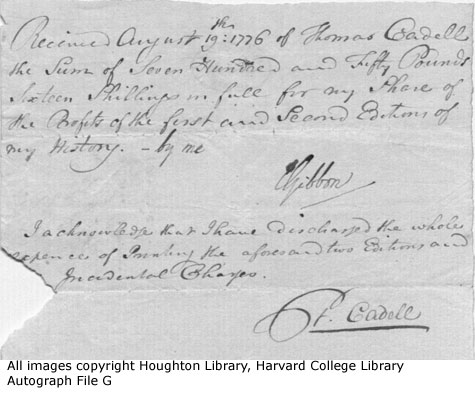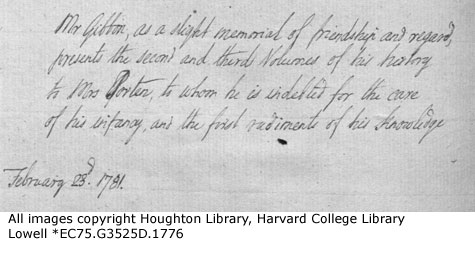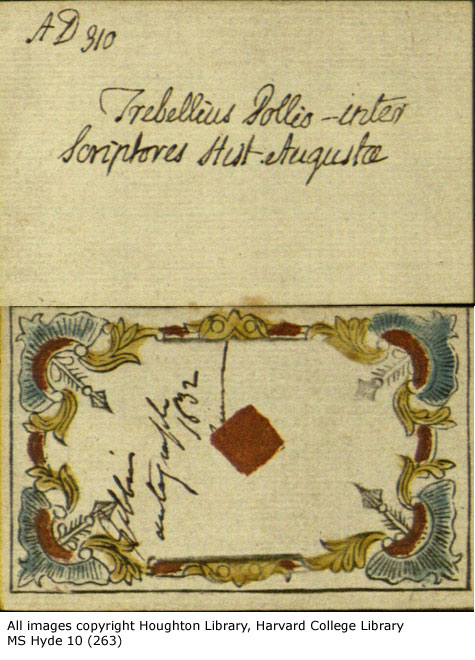The Luminous Historian, Part III
Remember, this week is your last chance to see the exhibit. We’ll be closed after Friday until the New Year, when I have to take it down.
The first volume of the Decline and Fall was originally planned for a run of 500 copies, but halfway through printing advance demand was such that this was increased to 1,000. Nevertheless, the entire edition sold out within a fortnight, necessitating a second edition of 1,500 copies. This too sold briskly, and the work was in its fourth edition by 1781, notwithstanding the appearance of a cheaper Dublin piracy. This receipt for the profits from the first two editions of the first volume is signed by Gibbon and the publisher, Thomas Cadell.
Gibbon was just ten years old when his mother died, after which he was largely raised by his aunt, Catherine Porten. Some sense of the bond between them can be gleaned from the gratitude that comes through in his presentation inscription on this volume, despite its 18th century formality.



